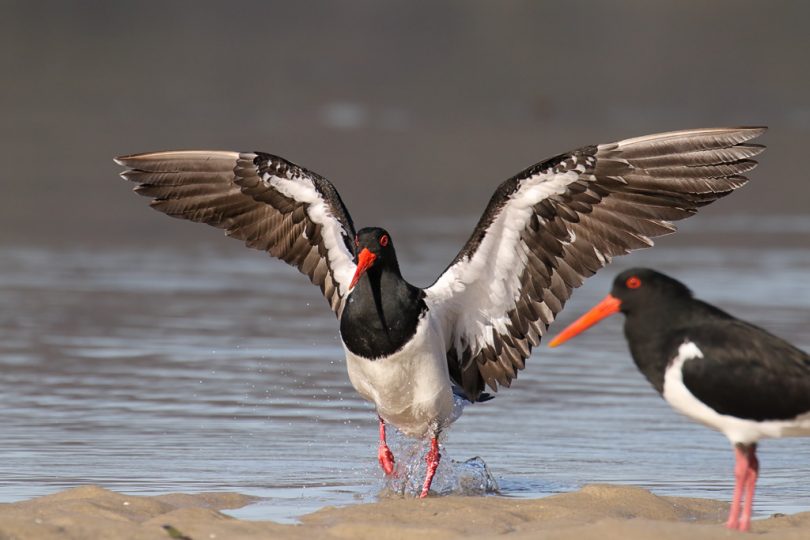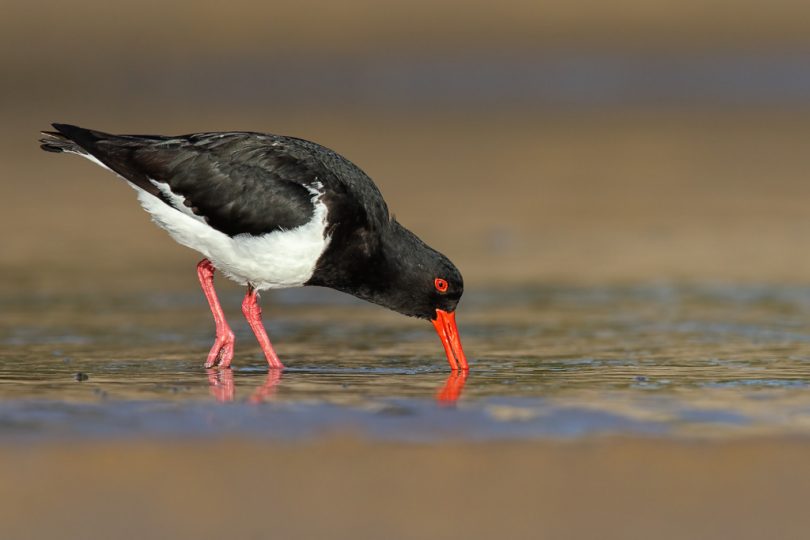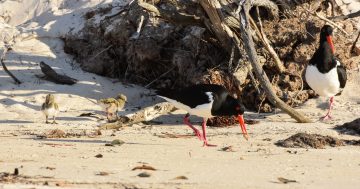
Endangered pied oystercatchers on the NSW South Coast. Photo: Leo Berzins.
Endangered pied oystercatchers have been spotted on nests on the NSW South Coast confirming the start of the shorebird breeding season.
David McCreery, from the National Parks and Wildlife Service, said pied oystercatchers tend to kick off the breeding season and have already started to lay on beaches in the Shoalhaven, Eurobodalla and Bega Valley.
“While we are excited to see these birds return, we also face each nesting season with some apprehension as there remain real threats to the birds and to the few eggs the female lays each year,” Mr McCreery said.
“One of the best ways that people can help this species is to keep their pet dogs away from birds and their nests.
“Beachgoers really must take care when walking through the dunes as any minor disturbance can damage eggs or cause adult birds to abandon their nest.”
In NSW the species is thinly scattered along the entire coast with fewer than 200 breeding pairs estimated to occur in the state.
Mr McCreery said the golf-ball sized eggs can be well camouflaged, so beachgoers were best to avoid the high dunes and walk only on the wet sand to avoid nesting sites.
“If people see a nest site we ask that they please don’t disturb the birds or eggs, instead call NPWS so we can go down and install signs or barriers to protect the site as best we can,” he said.
“NPWS rangers along with the Saving our Species team and dedicated South Coast Shorebird volunteers will be monitoring nests right through summer until March next year.”
Mr McCreery said last year was excellent for breeding and fledgling success at some sites.

Last nesting season was a good one for pied oystercatchers. Photo: Leo Berzins.
“We want the same this season so please, pay attention to the shorebird signs, keep your dog on a leash and walk on the wet sand,” he said.
“There are some threats that are more difficult to control such as predation from foxes or storm surges, but with the help of local volunteers we are doing what we can.
“We are currently keeping an eye on at least seven pied oystercatcher nests and with hooded plovers and little terns out looking for mates they too should start nesting over the coming weeks and months.”
Saving our Species (SoS) is one of the biggest conservation commitments undertaken in NSW.
It involves volunteers, scientists, businesses, community groups and the NSW Government coming together to secure the future of Australia’s unique plants and animals.
The main objectives of SoS are to increase the number of threatened species that are secure in the wild in NSW for 100 years and control the key threats facing threatened plants and animals.
The South Coast Shorebird Recovery Program spans beaches from the Illawarra down to the Victorian border and is boosted by volunteers each year.
If you would like to volunteer your time bird watching, locating nests and chicks, installing nest protection and recording data, please apply at NPWS South Coast Branch.









